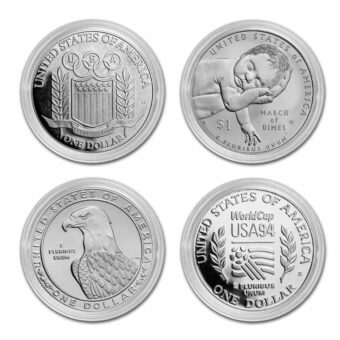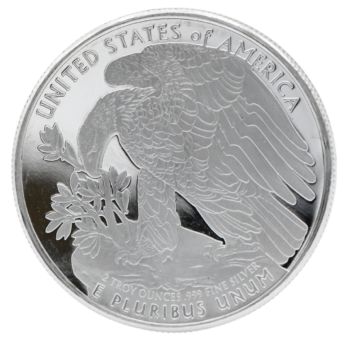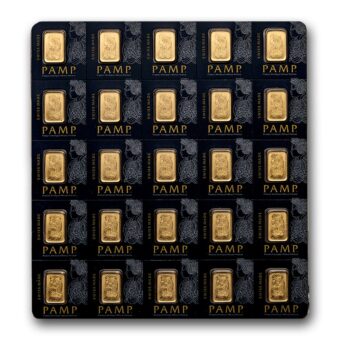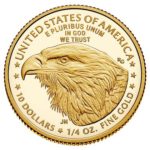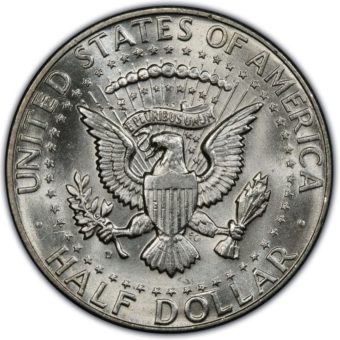Market Snapshot: A Week Defined by Tariff Shocks and Shifting Sentiment
Gold initially surged to a record $3,167.57 early in the week as market participants sought safety amid a firmer-than-expected PCE inflation report. However, the trend reversed after new U.S. tariffs were announced, dragging down equities and precious metals alike. The S&P 500 closed the week with a 4.8% loss—shedding over $2 trillion in value—while gold retreated to $3,121.70. Next week’s CPI and PPI readings are expected to significantly influence market direction and rate expectations, especially as gold’s broader trajectory gains attention.
This week’s movements illustrated that even traditionally resilient assets like gold are not immune to cross-market pressures. While inflation-related demand initially buoyed prices, the intensity of the tariff announcement and corresponding market reaction created a liquidity-driven retreat. The dynamic reflects a broader truth: when market dislocation occurs, correlations can shift quickly, and assumptions about safe-haven behavior may not always hold.
The upcoming inflation data will play a pivotal role in clarifying whether recent volatility was a temporary response to headlines—or the beginning of a longer-term repricing of risk across asset classes.
A Daily Look at the Market Pulse
Monday – 3.31.25
Gold set new records, with futures hitting $3,162.00/oz, as demand for perceived safe-haven assets increased in response to concerns around global growth and looming U.S. trade policies. U.S. equities, meanwhile, bounced from recent lows. Notably, Goldman Sachs revised its year-end gold target to $4,500, citing ongoing macro uncertainty.
The broader backdrop of this rally was grounded in rising inflation and growing geopolitical complexity. Safe-haven positioning gained traction not only due to tariffs, but also because of long-term policy uncertainty that has been building throughout the first quarter.
Tuesday – 4.01.25
Gold prices softened as some participants booked profits and equity markets regained ground. Despite the pullback, caution remained elevated ahead of U.S. tariff implementations, supporting the long-term appeal of gold in diversified strategies.
This pattern of rotation from gold into equities reflected short-term tactical repositioning. However, market sentiment remained cautious, and longer-duration strategies continued to allocate toward hedging instruments amid elevated global uncertainty.
Wednesday – 4.02.25
Gold rose modestly to $3,157.70 while silver held steady at $34.625. The focus turned toward potential trade fallout, with estimates suggesting $33 trillion in global trade flows could be disrupted. The U.S. was projected to experience a notable increase in average tariff rates, prompting conversations about possible implications for inflation and GDP.
The broader implications of trade disruptions were clear—market participants began reevaluating exposure to sectors and regions most vulnerable to supply chain dislocations and regulatory shifts. Gold remained resilient amid these recalibrations, holding firm even as equities grew choppier.
Thursday – 4.03.25
Gold and silver prices fell sharply as market participants reacted to the official announcement of new tariffs. The metals faced broad selling pressure in what appeared to be a “buy the rumor, sell the news” dynamic—despite a backdrop of persistent risk aversion.
This behavior often emerges in moments of market stress when capital shifts rapidly between asset classes. Although fundamentals for gold remained supportive, the broader liquidity crunch following the tariff announcement led to temporary dislocations.
Friday – 4.04.25
Gold slipped further, with June contracts settling at $3,100.10 and silver hitting a nine-week low. Short-term traders continued to unwind long positions. Meanwhile, a strong non-farm payrolls report (228,000 jobs vs. 140,000 expected) offered a counterweight to market stress but was largely overshadowed by broader trade concerns.
This mixed data environment—strong labor readings amid geopolitical turmoil—leaves the market in a state of flux. Participants are weighing whether growth resilience can coexist with policy-driven disruption.
Macro Shifts: Trade Policy Redefines the Global Landscape
Equity markets faced renewed turbulence following a wave of tariff announcements and retaliatory measures, with steep losses across sectors and geographies.
- Dow Jones: Down 3% Friday, after a 1,679-point drop Thursday
- S&P 500: Fell 3.6%, now over 15% off recent highs
- Nasdaq: Down 4.7%, entering bear market territory (21% off December peak)
These market moves suggest more than just short-term headline reaction—they represent a realignment of risk expectations as cross-border economic policies undergo sudden transformation. From large-cap tech to consumer discretionary, the impact was felt across sectors traditionally viewed as market anchors.
Key Developments
- Technology: Apple (-3%), Nvidia (-5%), Tesla (-6%) experienced outsized declines linked to China exposure
- Retail: Best Buy (-18%), Nike (-14%), and others sold off on tariff implications for consumer goods
- Currencies: The U.S. dollar weakened as confidence in monetary policy direction wavered
Policy Impact
China’s 34% retaliatory tariff matched new U.S. duties, sparking further debate around long-term trade stability. As supply chain complexity increases, pricing pressures and cross-border friction are becoming more central to market discussions.
These developments reflect a broader shift in global expectations—where once markets priced in collaboration and trade expansion, many are now beginning to assess the costs of fragmentation and friction.
Global Realignment: Economies Diversify Away from U.S. Dependence
The evolving tariff regime is prompting significant strategic shifts among America’s traditional allies.
- European Union: Preparing countermeasures in response to 20% tariffs on EU exports
- Canada: Officials signal a shift away from deep U.S. economic integration
- Germany: Adopting new fiscal strategies in light of shifting transatlantic priorities
- Business Outlook: Corporate leaders across Canada and Europe express interest in diversifying trade relationships
This shift isn’t purely reactive—it reflects a proactive reassessment of economic dependencies that have defined international commerce for decades. From reshoring supply chains to localizing production, the move toward self-reliance appears to be gaining institutional support.
As currency volatility increases and the U.S. dollar faces pressure, the trend toward global economic diversification may accelerate. While trade continues, its framework appears to be undergoing a fundamental transformation.
Global Reactions to U.S. Tariff Expansion
The U.S. decision to raise baseline tariffs to 10%—with additional hikes for select countries—has triggered an international response.
- Asia: Japan and Taiwan call for diplomacy; Vietnam faces a 46% levy
- Europe: Leaders issue unified calls for response while pushing for negotiation
- North America: Canada imposes a 25% tariff on U.S. vehicles outside trade compliance
- Latin America: Mexico plans long-term economic countermeasures
These developments point to a more fragmented policy environment where retaliatory measures become a standard part of economic dialogue. The diversity of responses—from confrontation to cautious pragmatism—illustrates the complexity of modern trade relationships.
Leaders across regions are balancing domestic priorities with a desire to maintain international stability, recognizing that long-term economic health may require greater resilience through diversification.
Trade Formulas Reshape Global Dialogue
The structure of the U.S. tariffs—based on bilateral trade balances—marks a departure from traditional trade negotiations.
- Method: The U.S. now calculates tariffs using a formula tied to its trade deficit with a specific country
- Impact: Nations such as Vietnam (46%) and Norway (15%) are subject to high levies, regardless of policy or intent
- Policy Ramifications: This approach leaves little flexibility for compromise or targeted negotiation
By using trade imbalances as a justification for broad tariffs, the new approach may reduce diplomatic flexibility. This presents challenges for countries attempting to clarify or negotiate their economic positions through conventional channels.
Market participants are increasingly viewing this model as a structural shift in how global economic policy is conducted—less reliant on mutual understanding and more influenced by predetermined outcomes.
Gold Outlook: Volatility Persists Amid Economic Uncertainty
Gold prices remain elevated but volatile, with analysts adjusting expectations based on the evolving macro backdrop.
- RBC’s Forecast: Raised 2024 average to $3,039/oz; 2025 to $3,195/oz
- Short-Term Trends: Spot gold near $3,106.30; possible test of $2,821 if momentum fades
- Support Factors: Rising inflation expectations and shifting Fed outlook provide a foundation for continued interest in metals
The broader takeaway is that gold remains a valuable anchor in uncertain times—not just because of its traditional safe-haven appeal, but due to its responsiveness to changing macro trends. Even in the face of short-term pressure, longer-term themes like inflation and rate policy continue to support the case for strategic allocation.
Increased gold interest also reflects broader shifts in market psychology, where hedging against central bank policy shifts and macro volatility is becoming more mainstream.
Looking Ahead: Economic Calendar for April 7–11
Monday, April 7
- 3:00 PM: Consumer Credit (Feb)
Implication: Strong credit growth may temper precious metals demand; weak growth could support gold prices.
Tuesday, April 8
- No scheduled reports
Wednesday, April 9
- 2:00 PM: FOMC Minutes (March)
Implication: A hawkish tone may pressure gold; dovish signals could lift metals.
Thursday, April 10
- 8:30 AM: CPI (March), Initial Jobless Claims (April 5)
- 12:00 PM: Fed’s Goolsbee speaks
Implication: A hot CPI or low jobless claims may reduce precious metals appeal; soft data could do the opposite.
Friday, April 11
- 8:30 AM: PPI (March)
- 10:00 AM: Consumer Sentiment (April, preliminary)
- 11:00 AM: Fed’s Williams speaks
Implication: Elevated PPI or strong sentiment may challenge metals; weakness in either could bolster demand.
The week ahead is poised to offer critical data that may either confirm or challenge the market’s current trajectory. Inflation readings, Fed commentary, and labor signals will all contribute to shaping sentiment and pricing behavior across asset classes.
Stay Informed with Prime Assets
Today’s market environment is complex, fast-moving, and shaped by a broad set of variables. At Prime Assets, we’re committed to helping you navigate that complexity with balanced insights and timely updates.
Want to dive deeper into these trends? Explore our latest research, weekly market outlooks, and real-time updates on our website. Whether you’re managing risk, reallocating capital, or simply staying informed, Prime Assets is your go-to resource for calm, credible market intelligence.






